- Tires & Tubes >
- Tires
More Related Items...
-
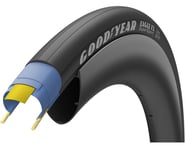 The Eagle F1 Supersport is the lightest and ...fastest member of Goodyear's Ultra High-Performance lineup. The GSR compound balances rolling resistance for high speed and enhanced grip for confident cornering abilities. Built in R:Shield flat protection has a lightweight anti-puncture ...Show MoreLess
The Eagle F1 Supersport is the lightest and ...fastest member of Goodyear's Ultra High-Performance lineup. The GSR compound balances rolling resistance for high speed and enhanced grip for confident cornering abilities. Built in R:Shield flat protection has a lightweight anti-puncture ...Show MoreLess -
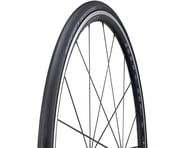 Ritchey WCS Race Slick Road 700c Tire is ...a race-worthy roller at an economical price. Made from 60A Durometer rubber, it features 120 threads per inch and a folding Aramid bead. Perfect for the local criterium, the group ride, or ...Show MoreLess
Ritchey WCS Race Slick Road 700c Tire is ...a race-worthy roller at an economical price. Made from 60A Durometer rubber, it features 120 threads per inch and a folding Aramid bead. Perfect for the local criterium, the group ride, or ...Show MoreLess -
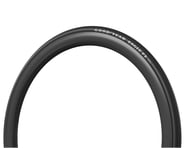 The Eagle F1 is part of Goodyear's Ultra ...High-Performance lineup with additional flat protection for an all-around tube-type race tire. The GSR compound balances rolling resistance for high speed and enhanced grip for confident cornering abilities. Flat protection is enhanced ...Show MoreLess
The Eagle F1 is part of Goodyear's Ultra ...High-Performance lineup with additional flat protection for an all-around tube-type race tire. The GSR compound balances rolling resistance for high speed and enhanced grip for confident cornering abilities. Flat protection is enhanced ...Show MoreLess -
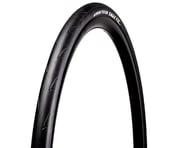 High-performance materials and cutting-edge technology make up the ...Goodyear Eagle F1 R Road Tire. Fast speeds, confident cornering, and puncture protection deliver the most advanced tube-type road tire for racing and endurance riding. Dynamic compounds are combined to offer low ...Show MoreLess
High-performance materials and cutting-edge technology make up the ...Goodyear Eagle F1 R Road Tire. Fast speeds, confident cornering, and puncture protection deliver the most advanced tube-type road tire for racing and endurance riding. Dynamic compounds are combined to offer low ...Show MoreLess -
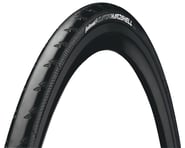 Continental takes durability beyond the limits with the ...Gator Hardshell Road Tire. Like the GatorSkin, the Gator HardShell tire balances great ride characteristics with long life--and at an affordable price. The Continental Gator Hardshell road tire features the bead-to-bead protection ...Show MoreLess
Continental takes durability beyond the limits with the ...Gator Hardshell Road Tire. Like the GatorSkin, the Gator HardShell tire balances great ride characteristics with long life--and at an affordable price. The Continental Gator Hardshell road tire features the bead-to-bead protection ...Show MoreLess
Related Categories
Bike Tires FAQ:
Clinchers are the most common type of bike tire. They feature a design where the tire bead "clinches" to the rim of the wheel when inflated. This is different from tubular tires, which are glued to the rim with rubber cement. Three common types of clinchers are folding tires, wire bead tires, and tubeless tires (not to be confused with tubular).
Folding bike tires are an improvement over wire bead tires in that they tend to be lighter and more performance-oriented. Folding tires utilize a light-weight flexible bead which can be folded making the tire easier to ship. Wire Bead tires on the other hand are heavier and more difficult to ship (since the tire must be packaged in its full size). Additionally, wire bead tires are cheaper to manufacture. Higher-end road and mountain bikes usually use folding tires (or tubeless tires, which are a type of folding tire). Less expensive city bikes, kids bikes, BMX bikes, and electric bikes tend to use wire bead tires.
Tubeless bike tire systems create a sealed chamber between the rim and the tire that does not require an inner tube. Requiring tubeless-specific tires and rims, these systems utilize tight tolerances to ensure a secure fit. To prevent flat tires, tubeless setups require a liquid sealant that is formulated to stanch small punctures and seal leaks. Tubeless tires are very common for mountain and gravel bikes and popularity for road riders has also grown recently especially among competitive racers. Check out our article on tubeless road bike tires.
Bike tire naming can be confusing. The safest bet is always to replace your tire with another that has the same size markings written on the sidewall. Tire sizes usually consist of two numbers with the letter X in the middle. The first number refers to the diameter of the wheel's rim and the second number refers to the width of the tire. Some examples of common tire sizes include: 700c x 28mm (road bikes), 29" x 2.4" (modern mountain bikes), and 26" x 2.1" (older mountain bikes). For more information on this topic, check out our guide on How To Choose The Right Size Bike Tire.
700c bikes tires are the most common size of tire for road and gravel bikes. 700c tires have a measured bead diameter of 622mm and can be found in a variety of widths. The most common road bike sizes are 700c x 25mm and 700c x 28mm. The most common gravel bike sizes are 700c x 35mm and 700c x 40mm. Check out this article to learn more about tire sizing.
As bike tires age, they will become thinner and more prone to flats. Look for signs of wear such as a flattened top, reduced tread, visible casing threads, or cuts. Some tires utilize a tread wear indicator (TWI) a small indentation in the tire that shows how much tread can be safely worn away.
TPI stands for Threads Per Inch and is a measurement of the number of threads in the casing of a tire. Tires with higher thread counts tend to be more supple providing a smoother and faster ride. However, higher TPI tires can also be more fragile and prone to punctures.
While some of the tools may differ depending on the tire, you will usually need a pair of tire levers, a bike pump, a spare inner tube, and a good YouTube tutorial.
